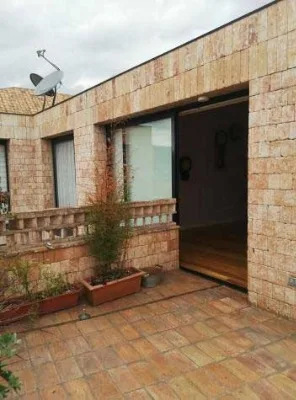Riobamba hospital combines traditional and indigenous medical care practices
By Irene Caselli
Dressed in a red poncho and traditional hat, Mariano Atupana stands out among the medical staff at the hospital in Riobamba.
But it is not just his dress that makes him different. Mr Atupana is a yachak, a medicine man, who uses burning candles and egg yolks to help diagnose ailments.

Natural remedies come from the jungles east of Riobamba.
Yachaks normally see patients in villages in Ecuador’s Andes mountains. But Mr Atupana examines them in a room at Riobamba’s Alternative Andean Hospital, a private institution where Western and Andean medicine are practiced side by side.
This hospital is one of a number of pioneering projects in Ecuador which are bringing together different types of health care.
Patient Jenny Layedra, 44, has come to the hospital because she has been feeling physically weak and tired, and suffering with headaches. She is to undergo a limpia, a cleansing procedure typical of Andean medicine. Limpias are based on the Andean belief that Mother Nature is sacred and is key to cure any ailment. “I like Andean medicine because it has great results,” she says. “Our ancestors, the Incas, used this kind of medicine. If they did, why not us?”
During the ritual, the yachaks first read the patient’s body. In Ms Layedra’s case, she rubs a candle on her body before Taita (Father) Mariano, as he is called in the Quechua indigenous language, lights it and interprets the smoke. In other cases, yachaks crack an egg or kill a guinea pig to assess their patient’s health.
After the initial diagnosis, yachaks rub their patient’s body with herbs, including stinging nettle, known across the Andes for its cleansing properties. Then they sip a herbal tincture and spray it on their patients out of their mouths. Finally, they blow smoke on the patient.
Natural healing
Both indigenous and non-indigenous patients come to the hospital for Andean treatment. Limpias cost on average $18.
Sonia Vela is a nurse working with terminal cancer patients and comes here regularly. “It is stressful for us nurses knowing that our patients are going to die. “Sometimes I come here to get rid of that stress, that anxiety, that depression. It’s better than going to see a psychologist or a psychiatrist and taking their medicines,” she says. “I do it naturally.”
Ms Vela likes the easy availability of limpias at the hospital. She would otherwise have to travel to rural areas to be treated.
Yachaks also see a positive side to working in a formal setting. “Nobody believed us earlier. They would call us witches and warlocks,” says Valeriana Anaguarqui, a medicine woman who has been working at the hospital since it opened in 2002. “We are yachaks,” she says. “Our knowledge is not in the mind, it is not written. It is part of Mother Nature. This hospital has allowed us to show that we have a knowledge,” she says.
Compared with other Andean countries such as Bolivia, Ecuador’s overall percentage of Amerindian population is relatively low, only 7% according to the 2010 census. Mestizos, people of mixed European and Amerindian descent, represent a large majority, and Western-oriented culture is dominant, especially in the cities. Yet there are 14 ethnic groups in the country, from the coast to the Andes and the Amazon region. That creates 14 different approaches to health, says Fernando Ortega, a medical doctor and anthropologist at Quito’s San Francisco University.
The 2008 constitution guarantees the rights of indigenous populations to their traditional forms of medicine. But despite this, inter-cultural understanding remains a challenge, says Mr Ortega. “If the patient has a different culture, we need to understand that culture in order to provide a culturally-adapted cure,” he says.
Placebo effect?
According to tradition, people become medicine men and women because they feel a calling. They receive training from their elders to learn about herbs and their properties but this is, of course, not comparable to the years of studying that doctors undergo.
The hospital’s doctors do not seem to be opposed to traditional medicine. They say their ability to offer a combination of treatments is important. Eduardo Silva, a clinical psychologist, says the traditional approach can complement his work because some indigenous patients might be more willing to take other medication if it is accompanied by what the shamans advise. “At the hospital we’re trying to integrate the subjective part, which comes from the cultural aspect, from one’s beliefs and values, with the objective part, which is scientific,” he says.
Few scientific studies have been conducted to assess whether Andean medicine is truly successful or if it only works as a placebo. As long as it does not substitute evidence-based medicine and is used to treat minor illnesses, demonstrating its validity is not necessary, Mr Ortega argues. “Validation is provided by the patients. If they feel it is good, that is all we need,” he says.
Judging from patients’ satisfaction after their limpias, this hospital’s model seems to be working. “I feel renewed,” says Ms Layedra after the limpia. “When the yachak sprayed the tincture on me, I felt that all the negative feelings inside my body left me,” she says. “If I feel unwell again, I would not hesitate to come back immediately.”
















